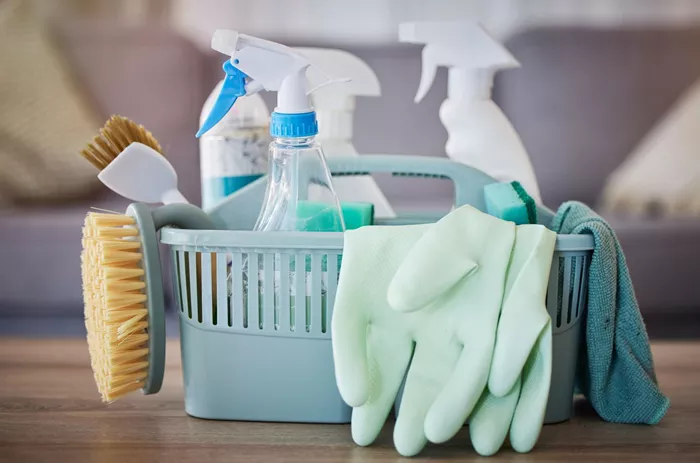Many consumers may not realize that common cleaning products could be exposing them to harmful substances linked to serious health risks like asthma, chemical burns, and even cancer. While most people trust the products they see on store shelves, experts say that thousands of household cleaners may not be as safe as they appear.
According to a study by the Environmental Working Group (EWG), more than 2,000 cleaning products on the American market contain substances that may pose health risks, including volatile organic compounds (VOCs) and other potentially toxic chemicals. These findings highlight the importance of consumer awareness when selecting cleaning products and the need for increased transparency from manufacturers.
Tasha Stoiber, senior scientist at EWG, explained, “Many people assume that when a product is available for purchase, it is safe. Unfortunately, that’s not always the case.” These concerns are compounded by a growing issue known as “greenwashing,” where companies falsely market their products as environmentally friendly, even though they may contain harmful chemicals.
Dr. Natalie Johnson, associate professor of environmental and occupational health at Texas A&M University, emphasized that volatile organic compounds (VOCs) in cleaning products can pose significant risks, especially with long-term exposure. VOCs are gases emitted from solid or liquid products, causing irritation to the eyes, nose, and throat and even damaging the liver, kidneys, and central nervous system. Worse still, VOC levels can often be much higher indoors than outdoors.
The challenge for consumers is that harmful chemicals are not always clearly labeled on product packaging, making it difficult to know exactly what’s in a cleaner. Jennie Romer, deputy assistant administrator for pollution prevention at the U.S. Environmental Protection Agency (EPA), stated, “There is a real need for better transparency in the market. Consumers should be able to trust that the cleaning products they use are safe for their health and the environment.”
Fortunately, experts offer several strategies to help reduce exposure to harmful chemicals. First, consumers can look for products with the EPA’s “Safer Choice” label, which ensures that they meet the agency’s rigorous standards for safety and environmental impact. Products with this label do not contain chemicals linked to cancer, reproductive issues, or other health concerns.
Romer highlighted how simple tools, like the Safer Choice database, can help consumers find safer products. “It’s as easy as looking up a product on the database to find out whether it meets the EPA’s safety standards,” she explained.
In addition to selecting safer products, how you use them is equally important. Experts warn against mixing cleaning agents, such as bleach and ammonia, which can create dangerous fumes. Romer advises consumers to always follow product labels carefully to avoid mixing chemicals that could cause harm.
Moreover, frequent use of certain cleaning products can increase the risk of exposure to VOCs and other chemicals. Dr. Johnson reminded consumers that “it’s the dose that makes the poison.” Limiting frequent exposure and using cleaning products as directed can help reduce potential health risks.
To make a difference, experts suggest starting with small, manageable steps. Rather than overhauling an entire cleaning cabinet, begin by gradually replacing harmful products with safer alternatives. Items like vinegar, baking soda, and lemon juice are natural, non-toxic substitutes that can effectively clean many areas of your home.
Stoiber also recommends routine vacuuming and dusting, as many chemicals can settle in dust, which can then be inhaled or ingested. Regular cleaning of floors and surfaces helps to minimize exposure to hazardous substances left behind by conventional cleaning products.
Brian Sansoni, senior vice president of the American Cleaning Institute, emphasized that proper use of cleaning products plays a critical role in maintaining public health. “Cleaning contributes to health and quality of life, especially in areas like homes, schools, and healthcare facilities,” he said. However, with the right knowledge and safer alternatives, consumers can reduce their exposure to toxic chemicals without sacrificing cleanliness.
Read more:
How Employers Can Tackle Skyrocketing Healthcare Costs: Practical Strategies For 2025
More Than 230 Doctors Urge Trump To Release Medical Records Amid Growing Health Concerns
Global Rollout Of WHO’S HAI Surveillance Handbook To Improve Infection Prevention Efforts


